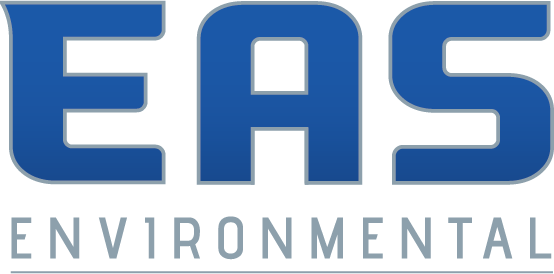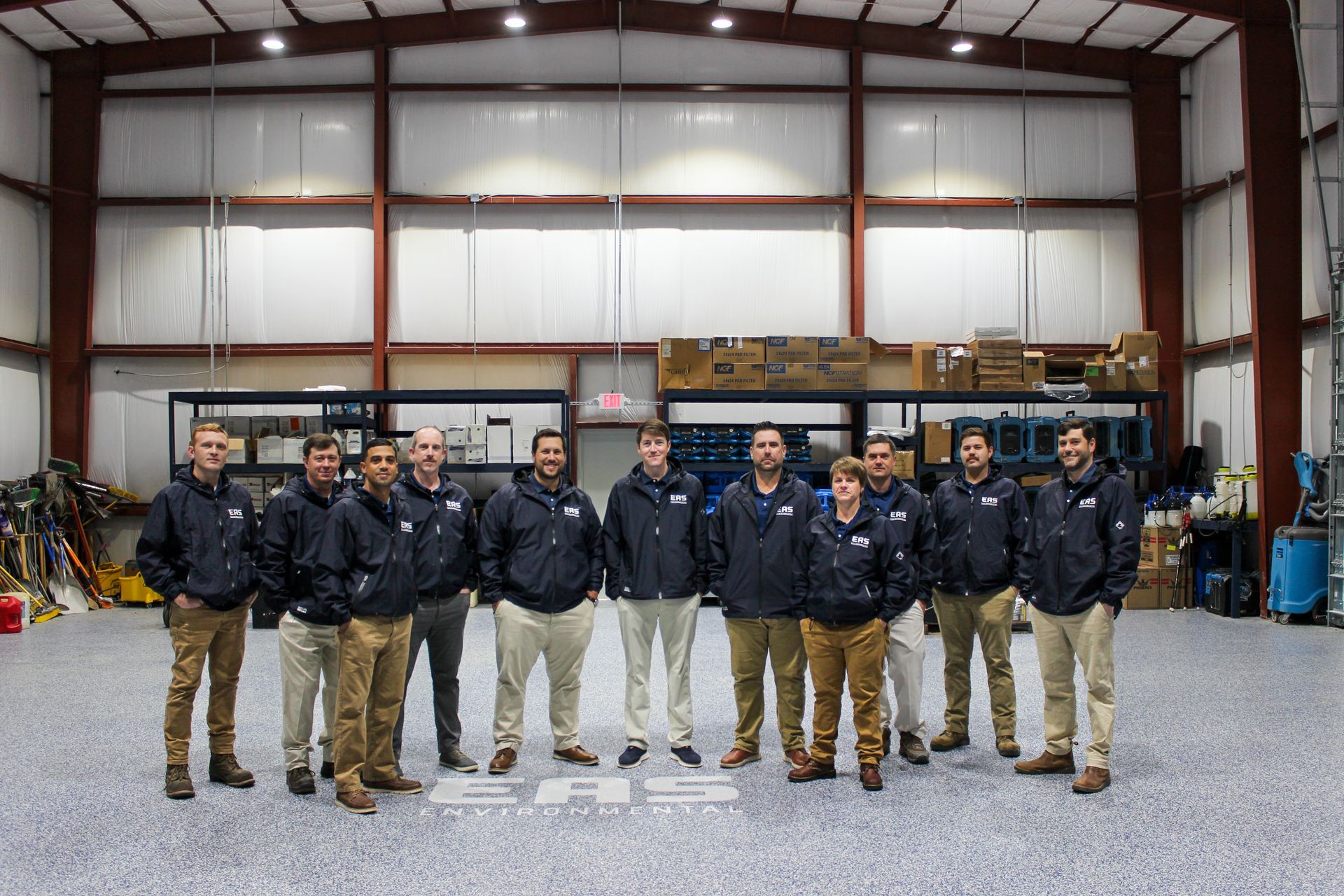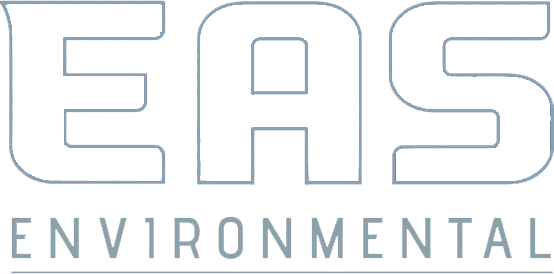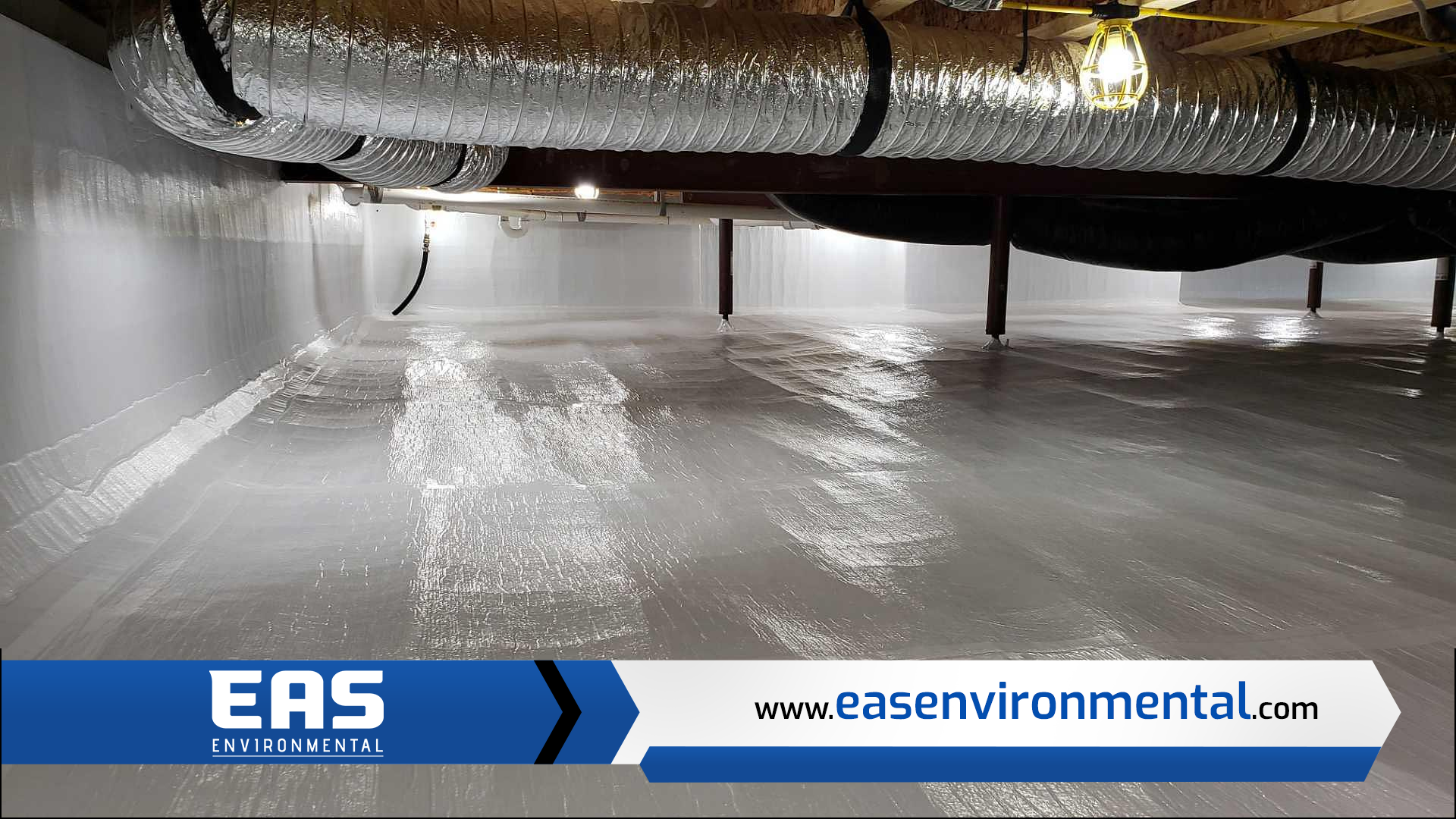
Waterproofing your crawl space is a crucial step that can prevent your property from flooding and raise its overall value. It is crucial to have your crawl space waterproofed by a contractor if it is susceptible to water infiltration or has already sustained water damage. Professional waterproofing of crawl spaces entails the employment of top-notch tools and techniques to guarantee that the area is effectively sealed and shielded against water intrusion.
Crawl space waterproofing can raise the overall health and safety of the area, as well as your home's worth, in addition to protecting it against water damage. We will go into great detail about the advantages of expert crawl space waterproofing in this blog.
Overview of Crawl Space Waterproofing
Homes frequently have crawl spaces, which can be used for a number of things, including storing utilities and giving access to plumbing and electrical systems. Crawl areas are, however, also vulnerable to water penetration, which, if ignored, can result in expensive repairs and even health issues. Crawl space waterproofing can help with that.
To keep water from getting into the crawl space, waterproofing entails sealing it off and setting up a drainage system. To stop moisture from entering the crawl area, it may also include building a vapor barrier. These steps enhance the overall health and safety of the area while helping to safeguard your house against water damage.
The ideal solution for your home will depend on several criteria, including the location of your home, the type of soil it was constructed on, and the amount of water infiltration you are currently experiencing. There are several alternative methods of waterproofing crawl spaces. An experienced waterproofing contractor can evaluate.
4 Benefits of Crawl Space Waterproofing
There are many advantages to waterproofing crawl spaces for homeowners in North Charleston, SC. Just a handful of the main advantages are as follows:
- Protects your home from water damage: Waterproofing your crawl space has the main advantage of preventing water damage to your house. You can stop water from entering your home and harming your foundation, walls, and other structures by sealing off the crawl space and setting up a drainage system.
- Improves indoor air quality: Mold development can be caused by a moist crawl space and have a detrimental impact on indoor air quality. You may lessen the chance of mold formation and enhance the quality of the air in your home by waterproofing your crawl area.
- Increases energy efficiency: Your home may become less energy-efficient as a result of drafts and ventilation problems caused by a moist crawl space. You may increase the overall insulation of your house and save energy costs by waterproofing your crawl space.
- Increases home value: Enhancing indoor air quality and preventing water damage are two things that can raise the value of your house. You may raise the value of your house and boost its appeal to potential purchasers by investing in skilled crawl space waterproofing.
Crawl Space Waterproofing Process
The crawl space waterproofing process typically involves the following steps:
- Inspection: Conducting a crawl space examination is the first stage in the waterproofing procedure for crawl spaces. This normally includes a visual evaluation of the area to spot any places where water penetration is likely to occur as well as the use of specialist equipment to gauge the crawl space's moisture levels.
- Planning: The waterproofing contractor will create a strategy for waterproofing the crawl space based on the findings of the examination. This may entail vapor barrier installation, drainage system installation, crawl space enclosure, and other necessary steps.
- Implementation: The contractor will start putting the waterproofing measures into action once the waterproofing plan has been created. This may entail sealing off any gaps or openings that could allow water to enter the space, digging around the crawl space's perimeter to create a drainage system, and putting a vapor barrier on the space's floor.
- Testing: The contractor will test the crawl space after the waterproofing measures have been put in place to make sure it is sufficiently sealed and shielded from water intrusion. This could entail visual checks to make sure that all gaps and cracks have been properly sealed as well as the use of specialist equipment to test moisture levels in the crawl space.
- Maintenance: Waterproofing a crawl space is a continuous process, therefore it's crucial to continue taking waterproofing precautions throughout time to keep the space free from water intrusion. This could entail routine checks and upkeep procedures, such as clearing the drainage system or replacing a faulty vapor barrier.
Cost of Crawl Space Waterproofing
The size and complexity of the crawl space, the degree of water infiltration, and the kind of waterproofing methods being used are just a few of the variables that will affect the cost of waterproofing a crawl space. The following are some of the major variables that can impact the price of waterproofing a crawl space:
- Size of the crawl space: More work and supplies will typically be needed to waterproof larger crawl spaces, which could raise the project's overall cost.
- The extent of water infiltration: It may be necessary to take more comprehensive waterproofing solutions if the crawl space is significantly affected by water infiltration, which will raise the project's cost.
- Type of waterproofing measures: There will be a range of expenses associated with different waterproofing techniques. For instance, setting up a drainage system might cost more than vapor-proofing the crawl area.
- Location of the crawl space: The price of waterproofing can also vary depending on where the crawl space is located. For instance, additional waterproofing measures may be needed for crawl spaces in places with high water tables or areas that are prone to floods, raising the project's overall cost.
Professional Crawl Space Waterproofing Services
Working with a qualified waterproofing contractor is essential if you're thinking about waterproofing your crawl space in your North Charleston, SC, house. Consider hiring a professional crawl space waterproofing service for the following reasons:
Expertise
Professional waterproofing specialists can evaluate your crawl space and suggest the finest waterproofing solutions based on your unique demands after receiving the necessary training and experience. They are also able to spot prospective problems that the untrained eye would not see right away.
Quality materials
To guarantee that your crawl area is fully sealed and shielded from water intrusion, professional waterproofing contractors employ high-quality materials. Long-term cost savings are possible thanks to the fact that these materials are frequently more robust and long-lasting than those that are offered to homeowners.
Professional installation
The tools and equipment required to install waterproofing measures in your crawl space properly are available to professional waterproofing contractors. By doing so, you can help to guarantee that the task is done correctly and that your crawl space is adequately shielded against water intrusion.
Warranty
Many reputable waterproofing contractors provide guarantees on their work, which can provide customers peace of mind and safeguard them against problems in the future.
Related Services
There are other associated services, in addition to crawl space waterproofing, that can help safeguard your property against water damage and raise its total value. Related services include, for instance:
- Foundation repair: If water intrusion has harmed the foundation of your home, repairs may be necessary to get it back to how it was. Your home's stability can be increased and additional damage can be avoided with foundation repair.
- Basement waterproofing: Basements are frequently vulnerable to water penetration, just like crawl spaces. To keep water from getting into the basement, waterproofing entails sealing it off and setting up a drainage system.
- Sump pump installation: A sump pump is a device used to pump out extra water and stop flooding that is positioned in the lowest point of a crawl space or basement. Installing a sump pump might be a good way to guard your house against water damage.
- Dehumidification: Mold growth and other problems might occur in your home as a result of excessive air moisture. Dehumidification is the process of removing extra moisture from the air using specialist equipment, which can enhance indoor air quality and lower the possibility of water damage.
Facts on Crawl Space Waterproofing
- Waterproofing the crawl space of a house or other structure is a method that aids in preventing water from entering the space.
- To ensure that the project is done right, crawl space waterproofing in North Charleston, SC, is a specialized service that calls for a qualified specialist.
- Installing a vapor barrier is the most typical way in North Charleston for waterproofing a crawl space. To stop water from leaking in, a thick plastic sheet is positioned on the crawl space's walls and floor.
- The installation of a sump pump, a drainage system, and the caulking of any cracks or gaps in the walls or floor are further strategies for waterproofing a crawl space in North Charleston.
- Regular crawl space inspections are necessary to ensure that the waterproofing measures are still working.
- To keep water from getting into the crawl space, it's crucial to make sure that any vents or openings are securely sealed.
Frequently Asked Questions
What are the main causes of water damage in a crawl space?
- Flooding: Flooding is a frequent reason for water damage in crawl spaces, particularly if the space is situated in a flood-prone area.
- Poor drainage: Water can build up in the crawl space and cause damage if it is not graded properly or if the drainage system is insufficient.
- Plumbing leaks: In the crawl space, leaks in plumbing fixtures or pipelines can cause water damage.
- HVAC leaks: Additionally, water damage in the crawl space may result from leaks in the HVAC system.
- Condensation: Lack of ventilation in the crawl area can cause moisture in the air to condense on surfaces, which can result in water damage.
What are the most effective methods of crawl space waterproofing?
There are several effective methods of crawl space waterproofing, including:
- Sealing off the crawl space: Using a vapor barrier to seal off the crawl area is one efficient method of waterproofing a crawl space. Installed on the floor of the crawl space to stop moisture from entering, a vapor barrier is a layer of plastic or other material.
- Installing a drainage system: Creating a drainage system around the crawl space's perimeter is another efficient means of waterproofing it. A drainage system aids in rerouting water and preventing it from entering the crawl area.
- Repairing any leaks: It's critical to fix any leaks in the crawl area to stop more water damage from occurring. This can entail patching up broken plumbing pipes or caulking any crevices or openings where water is seeping in.
- Installing a sump pump: Installing a sump pump in the crawl space may be important in some circumstances to remove extra water and avoid floods.
- Dehumidification: Could be required to use a dehumidifier to eliminate too much moisture from the air and avert water damage if the crawl space has significant levels of moisture.
How often should crawl space waterproofing be done?
The location of your home, the kind of soil it was built on, and the amount of water infiltration you are experiencing are just a few of the variables that will affect how frequently you should waterproof your crawl space. To examine the quality of the area and spot any possible problems, it is often a good idea to have your crawl space inspected by a qualified waterproofing specialist every few years.
It could be required to waterproof your crawl area more frequently if there is significant water infiltration or if it hasn't been waterproofed before. Working with a qualified waterproofing contractor who can evaluate the situation and suggest the best line of action is crucial in these situations.
What are the risks associated with crawl space waterproofing?
The procedure of waterproofing a crawl space involves sealing it off and setting up a drainage system to stop water from getting in and ruining the house. To stop further damage and safeguard the house, it's critical to repair any problems that might be creating water damage in the crawl space. Crawl spaces can be waterproofed utilizing a variety of techniques, such as vapor barrier sealing, drainage system installation, leak repair, sump pump installation, and dehumidification to remove excess moisture from the air.
The amount of water penetration occurring and the individual needs of the home will determine how frequently the crawl area needs to be waterproofed. It is crucial to work with a professional waterproofing contractor who has the training and experience to correctly install waterproofing measures and minimize these risks because there are many risks connected to waterproofing crawl spaces, including structural damage, health risks, and environmental impacts.
What are the best ways to prevent water damage in a crawl space?
Homeowners can take some measures to stop water damage in a crawl space. Installing a sump pump, a device that is positioned in the lowest part of the crawl space or basement to pump away extra water and prevent flooding is one practical solution. Another approach to stopping water from building up in the crawl space and creating damage is by properly grading the space so that water drains away from the house's foundation. Water damage can also be avoided by fixing any leaks in the crawl area, such as broken plumbing lines, holes, and fractures where water can enter.
Water damage can also be avoided by putting up a vapor barrier, which is a layer of plastic or another material that is put down on the floor of the crawl space to keep moisture out. It can be important to use a dehumidifier in crawl spaces with high levels of moisture to remove extra moisture from the air and avoid water damage. Homeowners may safeguard their properties against water damage and maintain their value by following these guidelines.
What are the best ways to prevent future water damage in a crawl space?
To avoid additional water damage in a crawl space, it is crucial to:
- Installing a sump pump will drain extra water and stop floods.
- Make sure the crawl area is properly graded to direct water away from the foundation.
- Fix any leaks in the crawl space, such as broken plumbing lines, holes, and fractures that are letting water in.
- To keep moisture from entering the crawl space, install a vapor barrier.
- If necessary, dehumidify the crawl space to get rid of extra moisture in the air.
Contact EAS Environmental Today!
EAS Environmental will do everything we can to ensure your experience with us is excellent.
Request A FREE Estimate
Request a Free Estimate Form
Checkout Recent Post
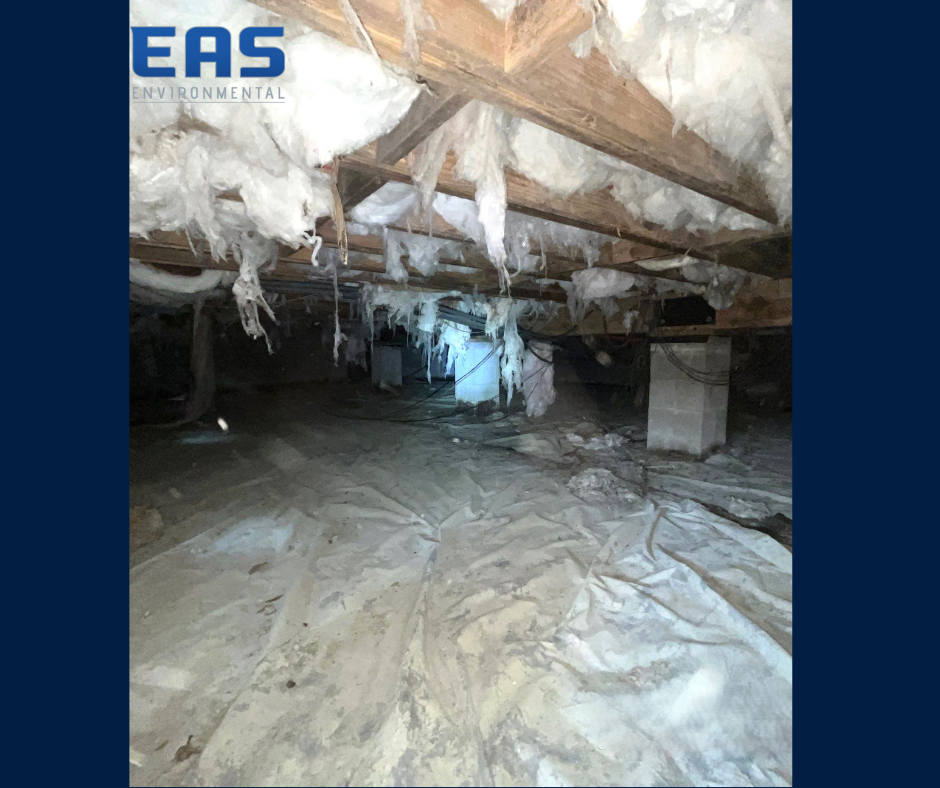
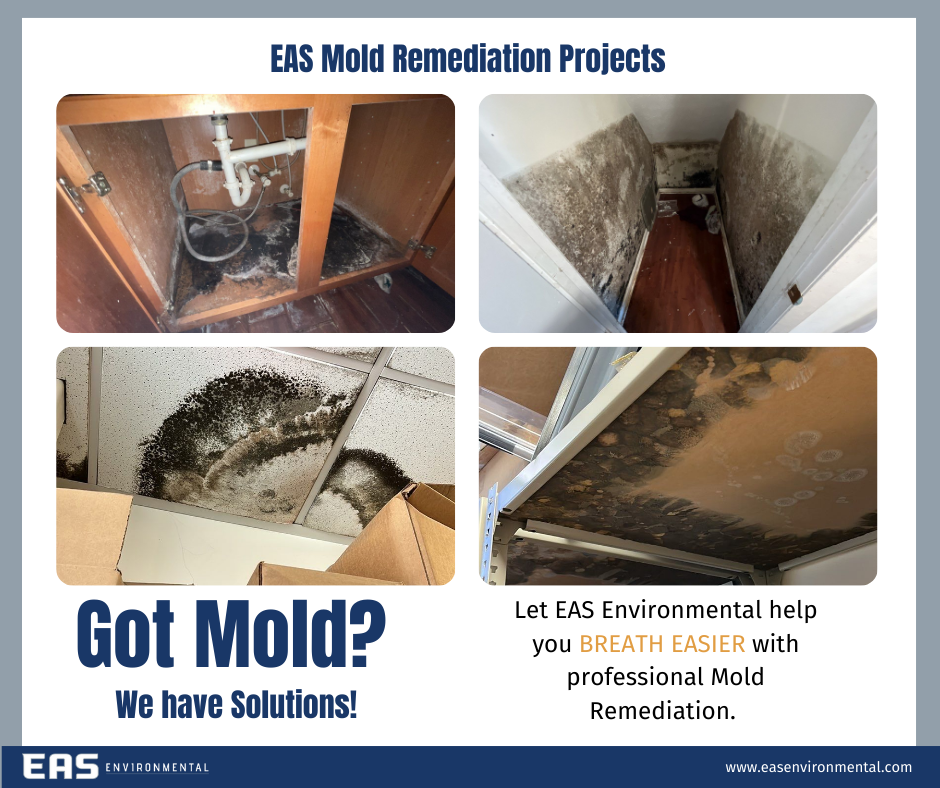
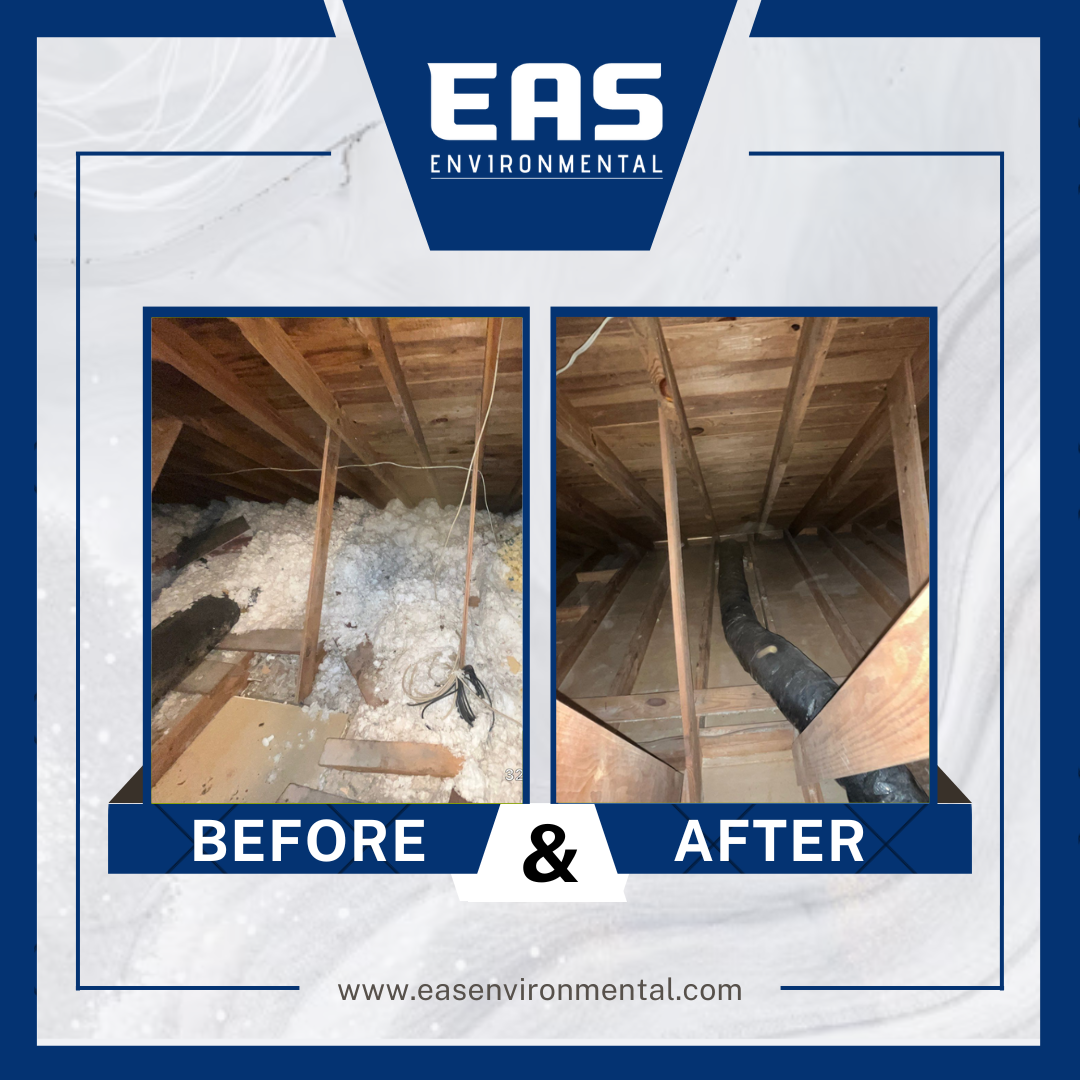
Got a Question? We’re Here to Help.
You can arrange an appointment or make an enquiry by phone or email, orget in touch to us via our contact form.
